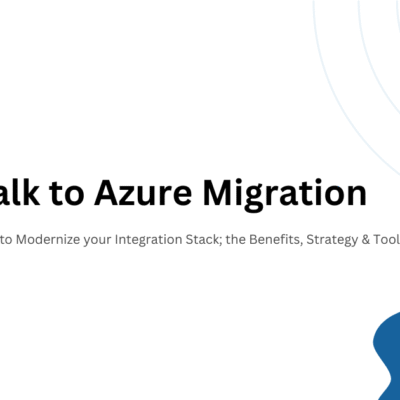Empowering AI-Powered Low-Code Development using Copilot for Power Apps Platform

Artificial Intelligence (AI) has made tremendous progress in the past decade and its influence on technology continues to expand into new horizons. Microsoft has been actively developing AI-powered copilot for various products such as GitHub, Microsoft 365, Bing, Edge and so on. Every single copilot aims to make coding more effective and enhance productivity levels. In September 2023, Microsoft announced the availability of Microsoft Copilot. Microsoft Copilot encompasses all the existing copilot capabilities into a single seamless experience which will be available in Microsoft 365, Windows 11, and on the web browsers Edge and Bing.
In October 2023, Microsoft announced the general availability of Copilot for Power Apps. Power Apps empowers businesses to innovate and adapt to changing needs more quickly at reduced costs. It can expedite application development, allowing developers to focus on more complex and innovative tasks. This empowers developers to efficiently prototype, build, and customize applications, enabling them to respond rapidly to business needs. The AI Power Apps Copilot acts as a virtual assistant and provides instructions to write custom code for your Power Platform apps.
Getting Started with Power Apps Copilot
You can access Copilot from the Power Apps app creation page or the Power Apps Home Page. Depending on your data source, Copilot will suggest the different app ideas. Choose the app template, customize the app and publish it as per your requirement – it’s as simple as that! If you do not see the Copilot options, ask your organization administrator to enable it from the Power Platform Admin Center.
Developing Apps using Power Apps Copilot
With Copilot, you can develop an app with the associated data by telling the Copilot what you need through a conversation. For example, you can say Create an app to manage the sessions at a conference, Create an app that will collect RSVPs, Create an app that can keep track of my sales leads, etc. The AI Copilot will automatically design the application based on your requirement.
You can use words that we use every day in our lives to describe what the app should do. The inbuilt natural language processing (NLP) capability of the Copilot will help to develop the app and provide in-app guidance to improve your app capabilities.
Building a sample app
Let’s create an app to manage daily user expenses. In the space provided, enter the text of what you want the app to create for you. Click Go. Within minutes, you will see the power of Copilot kicking in to work. The Power Apps Copilot creates a backend (Dataverse) table that will store the user data. The Copilot will also create the rows and columns in the table along with sample data. With this data, we can start working on creating the app.


The Power Apps Copilot experience does not end here! You can continue to interact with Copilot from the navigation pane on the right side of the page. For example, adding a payment method column in the table. All these interactions with the Copilot are like human interactions telling the AI what it should do. You can also change the data type of the payment method column, if required.

The suggestions at the bottom left of the screen will provide different options for you to improve/modify the table data. Click the column to view the column properties. In addition, you can perform operations like changing the table name, add or remove sample data. Once you are happy with the table properties, click on Create App. This will create the app in few minutes.
From there on, you can continue building the app based on your requirement. The Copilot experience does not end here. You will see the Power Apps Copilot on the right side of the app screen. You can interact with the AI and perform additional customizations within the app.

Adding Copilot control to a Canvas App
Microsoft Power Apps provides users with a blank canvas on which users can drag and drop components based on their requirements to design an user interface for their app. Once the components have been added to the canvas, they can make adjustments like size and formatting changes.
This is a Preview feature and it has to be enabled from the Settings screen. Select Settings > Upcoming features. Toggle the Copilot component to On from the Preview tab.

Once the Copilot component is enabled, you will see the Copilot (preview) control under the Insert tab.

Once the Copilot control has been added to the Canvas app, it will be able to respond to questions for smaller datasets. Select the data source from the left pane under “Connect a data source”. Alternatively, you can select Data source (items) from the Properties tab and choose a Dataverse table (if available) for your data source. For example of an attendance management app, you can select the attendance management table as the data source.

Add the Copilot control to the screen and adjust its height and width depending on your requirement. Select the fields or the views to which the Copilot control will provide answers.

Save the changes and play the app. You can post your questions to the Copilot in natural language to see how the Copilot responds to your questions. For example, let’s say we have the attendance management system. We can ask basic questions such as how many students were present on Monday?, What percentage of students were absent on Fridays? and so on.
Wrapping Up
Microsoft Power Platform Copilot provides a code-free approach of building user friendly applications with its powerful automation capabilities. With more businesses moving towards the low-code / no-code approach, Power Platform Copilot opens up a plethora of opportunities for businesses in terms of growth and innovation. Microsoft Power Apps Copilot is the future of application development.
At VNB Consulting, we understand the critical role technology plays in today’s fast-paced business environment. We’re here to empower you with custom-built Power Apps solutions that drive customer engagement to new heights. Our deep knowledge and expertise in Power Apps technology can help you build customized, user-friendly applications that streamline your business processes and engage your customers. Our experts can design and deploy applications that not only meet your unique requirements but also enhance your customer engagement strategies.
Let us show you how our Power Apps expertise can enhance your customer engagement strategies, streamline your operations, and foster growth. Contact us today for a free assessment of your business.


